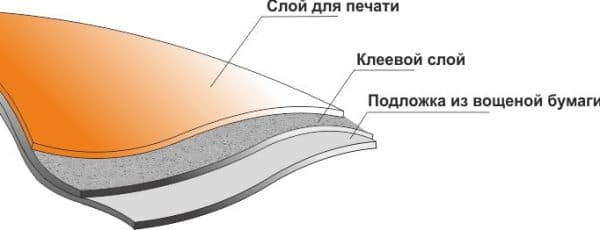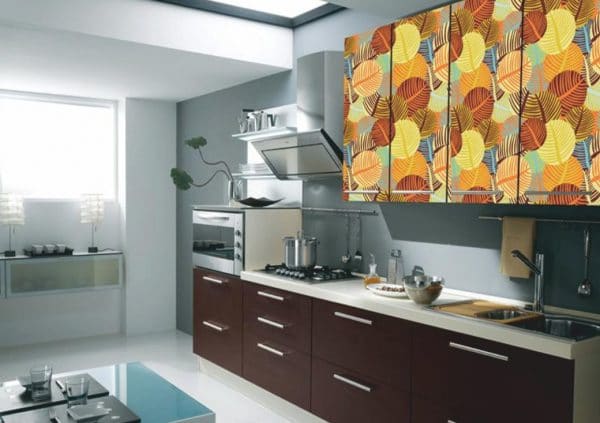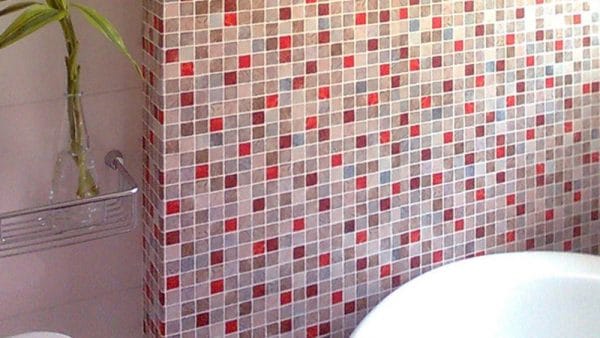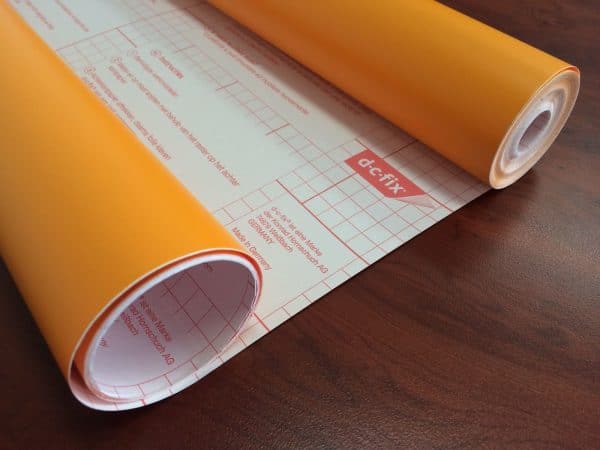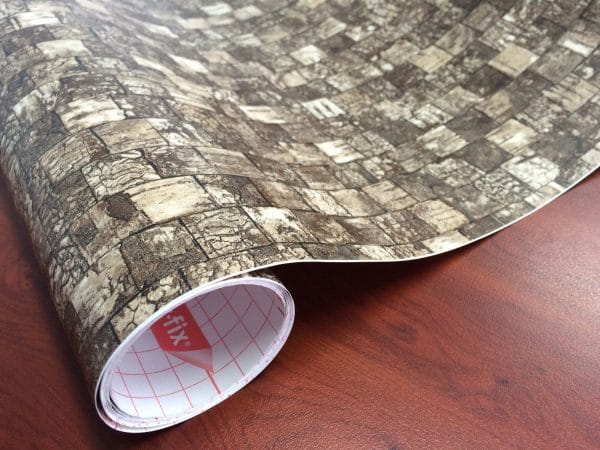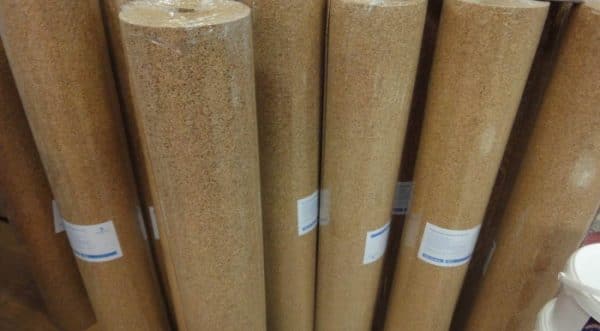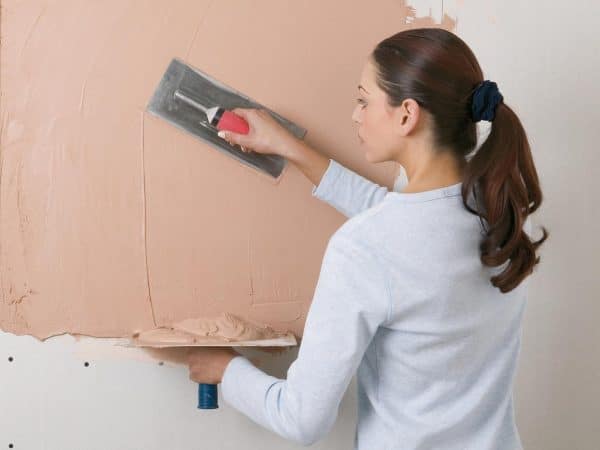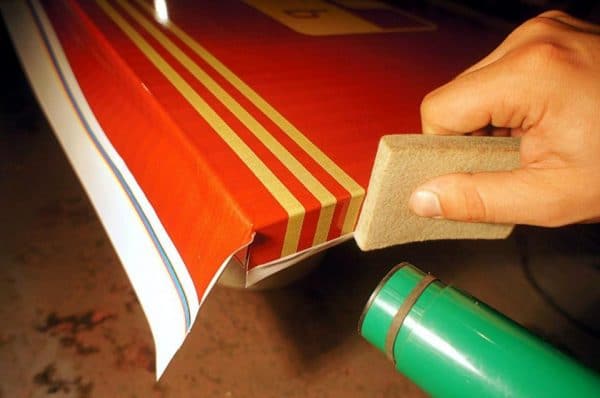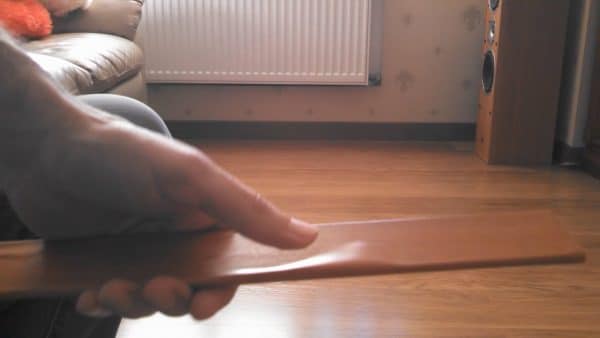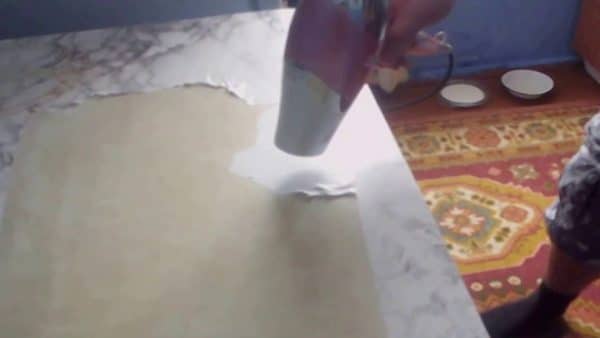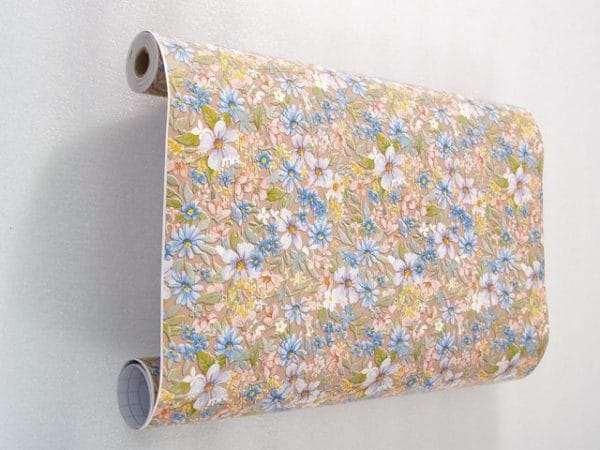It happens that the interior of a room or furniture is annoying, but it is not possible to completely change the atmosphere. To refresh the design without unnecessary time and money, you just need to figure out how to glue the self-adhesive film and purchase this material. Such a film is firmly attached to smooth bases, and it is very easy to use, has a wide color gamut and is cheap.
- Material Features
- Areas of use
- Varieties of material
- Classification by material and purpose
- Structure division
- Classification by surface type and design
- What surfaces can be glued material
- Preparation of the base and material
- Drawing self-adhesive on furniture
- Sticking material on walls and doors
- Glass sticker
- Difficult areas
- Common mistakes
- Self-adhesive film removal
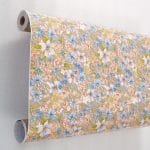
Material Features
Self-adhesive or self-adhesive film has high performance. This is due to its structure and composition, which includes durable polymeric substances that protect the base from damage. The film imitates different types of surfaces, so with it you can easily find the right solution for a particular interior. From the inside, the film has a protective layer that peels off before bonding the backing.
This material boasts a lot of advantages:
- resistance to high temperatures (up to +80 degrees), temperature differences;
- strength, scratch resistance, other types of mechanical stress;
- moisture resistance, the ability to apply in rooms with high humidity and where regular washing of walls and furniture is required;
- vast assortment and style solutions, suitability for various surfaces: wood, glass, metal, plywood, plastic;
- ease of sticking, minimum time for work, lack of dirt and the need for complex tools;
- the possibility of sticking old coatings without special preparation;
- durability, ease of further care.
to contents ↑To update the interior with self-adhesive, you do not need to invite professionals, you can cope with the work yourself. Nevertheless, all actions must be carried out correctly, in a strict sequence of steps, since the film is a rather capricious material, and with careless actions can go down unevenly.
Areas of use
Self-adhesive film is used in almost all rooms in the house and beyond. It is indispensable for the installation of indoor and outdoor advertising, in design, construction, decoration, furniture repair. Especially often, the material is used in the kitchen, because here the furniture deteriorates most quickly due to increased temperature and humidity, fumes, especially with poor ventilation.
If you stick the film on the kitchen cabinets, you can protect them from drops of fat and damage, because the spoiled material is easy to remove. Most often in the kitchen they use self-adhesive with imitation of wood, stone or give the kitchen set a bright, beautiful look with the help of a color film. Dining tables and worktops in the kitchen are also often affected by damage from sharp objects, and self-adhesive can extend their life.Solving the problem will be very inexpensive and quick.
Other areas of film use:
- Bathroom, toilet. Film is the best option for protecting walls from splashes, drops of water, and detergents. There are no ugly drips left on it, it is much easier to wash it than a tile: just wipe it with a damp cloth. If there is no time and money for a full repair in the bathroom, you can do it by pasting the walls with a self-adhesive film. In addition, the film prevents mold from multiplying, which is very important for a damp room. In the bathroom, finishing with a special mirror film or a holographic canvas is welcomed: the interior will turn out to be original and attractive.
- Children’s. Kids often paint on furniture, walls, and other surfaces. It is difficult to wipe the paint off the wallpaper, sometimes they immediately deteriorate from washing. An excellent option would be to purchase self-adhesive and protect the walls or their individual sections, as well as furniture and doors. The “painted” material is easy to remove and replace with a new one, because such cosmetic repairs will cost a minimal amount.
- Living room, bedroom and hallway. In these rooms, with the help of a film, they renew furniture, doors, mirror frames and even old windows. Self-adhesive will prevent the paint from cracking, crumbling, and will facilitate the cleaning of window sills. In addition, you can protect the window from the sun during the hot season by toning it with a film.
Using self-adhesive, it is possible to refresh the interior of any room, for example, stick it on stools, solid elements of a sofa and armchairs. Beautiful, bright film is an ideal material for creativity, which is widely used to create children's crafts. Self-gluing is also useful for making original stained-glass windows, decorating balconies and loggias, updating various interior items, and independently cutting interior stickers.
to contents ↑Varieties of material
Self-adhesive film is a universal, yet diverse material that can be classified by type of substrate, surface, structure and decor.
Classification by material and purpose
Self-bonding is done on the basis of paper, vinyl, impregnated fabric, as well as plasticizers, pigments and stabilizers. The material is divided into the main substance, which is part of:
- propylene;
- polyvinyl chloride;
- polyester.
Moreover, each material has a combined composition, just the main component occupies the largest share in it. All self-adhesive can be attributed to decorative. There are also special types of film: heating (reflects heat from the plane, used for decorating walls with heating structures) and membrane (used for waterproofing in construction).
to contents ↑Structure division
The structure of self-adhesive canvases is single-layer and two-layer. The first option is the cheapest, for the manufacture of such a film, PVC resin, plasticizers are used, and stabilizers are used to give strength. All of these substances are mixed to a homogeneous mass with melting, then subjected to extrusion to obtain a film. When adding different plasticizers, a single-layer material can turn out to be elastic or rigid.
Two-layer self-adhesives have two different sheets: base and cover. The base is prepared from fabric or paper, the cover consists of a certain type of PVC. For the production of a two-layer film, the technique of pumping or calendering molding or caching or extrusion is used. Such material turns out to be plastic, working with it is much more convenient than with a single layer. However, the technical characteristics of a single-layer film are higher; it is thicker and stronger.
to contents ↑Classification by surface type and design
Depending on the type of surface after gluing the material, you can get absolutely any effects. The main types of films:
- Glossy. Especially often used where there is no natural light, for example, in a bathroom or in rooms located on the north side of the house.
- Matt Suitable for spacious, bright rooms, give them a noble and stylish look.
- Transparent.Designed to protect surfaces from mechanical damage, protect furniture from cuts, scratches. Also suitable for updating and protecting glass products.
- Holographic. Create a beautiful play of light, interesting modulations. Due to the change in hue depending on the angle of illumination, such a film is perceived as bulk.
- Mirrored. Popular in small rooms, allow you to visually enlarge them. Most often used in the bathroom and in the kitchen.
As for the appearance of self-adhesive, it can imitate different types of materials and structures, for example:
- veneered coating (for most known types of wood);
- a natural stone;
- tile or porcelain tile;
- art canvas;
- different fabrics, especially velvet, tapestry and velor;
- leather and suede;
- cork cloth;
- metal, gold and silver spraying.
to contents ↑Also, the film can have bright colors: blue, red, yellow and other tones of the gamut. For children's rooms, they often choose material with the image of plots of cartoons, heroes of fairy tales, and other interesting topics. You can also find on sale a film on which the drawing is done independently, and after that it is easily erased with a rag.
What surfaces can be glued material
Self-adhesive film can be used on most coatings used in interior decoration. If we are talking about drywall, it must first be putty and primed. Wooden products must also be primed and a layer of special varnish applied. 2 layers of acrylic primer are applied to the metal.
Do not stick the film on the base, which has protrusions, bumps, defects: they will all stand out strongly, and the quality of gluing will leave much to be desired. Before work, you need to level the material and sand it well. It is also highly undesirable to stick the film on old wallpaper, especially in the kitchen, where fat settles on the walls. Self-adhesive will quickly peel off from such a coating.
to contents ↑Preparation of the base and material
Self-adhesive is very easy to apply. First you need to think through a new design of the room or individual items, to purchase the appropriate material. To stick the film without bubbles, the surface must be carefully prepared. After leveling and removing residual old peeling coatings, it is important to clean the base of dirt, grease, dust and other contaminants. Immediately before work, it should be primed.
For bonding, you may need:
- ruler;
- pencil;
- sharp knife or scissors;
- putty knife;
- clean rag;
- needle.
It is better if an assistant will participate in the work when gluing large surfaces. Also, professionals advise using a building hair dryer, which heats the joints and walks well along the corners of the surface to be glued - this will help make the coating perfectly even. In the absence of a building hair dryer, you can use ordinary household.
The width of the self-adhesive is usually 50-100 cm, so when buying you need to immediately choose the optimal piece in size. The material must be expanded, cut a piece or cut out of it decor. Geometrically correct parts are very easy to cut, because there is always a marking on the back of the film. When cutting, it is advisable to leave a small margin (1-2 cm) in case of measurement errors. It is necessary to cut the film very carefully and evenly so that there are no chipping marks, torn edges.
to contents ↑Drawing self-adhesive on furniture
If the part for gluing is small, for example, the facade from the cabinet, gluing is done on a dry surface. Larger furniture elements should be moistened with water and a soap solution. In this case, there will be a chance to correct the position of the canvas if it lies unevenly.Doors, if possible, should be removed, as well as accessories.
You need to start gluing on top. First, you should separate 8-10 cm of the film from the base, attach the sticky part to the upper zone of the product. Fix the area, smooth it from the center to the edges with a rag to expel all air bubbles. In this case, the lower part of the film with an unseparated substrate should hang freely. Next, you need to slowly, in parts, separate the remaining film from the substrate and descend down the surface of the product.
If there are bubbles left after completing work, they should be pierced with the thinnest needle, squeeze out air, iron the problem area. When a “wrinkle” appears, it must be blowed with a hairdryer, then smoothed thoroughly. It is also advisable to handle all corners and joints with a hairdryer. Only after the end of work can you return the furniture back and hang the furniture doors in place.
to contents ↑Sticking material on walls and doors
The process of applying the film to the walls is similar to that described above. After thoroughly preparing the wall or door, degreasing and priming, it is necessary to stick the film, separating the inner coating in parts. It is important to expel all emerging bubbles immediately, otherwise you will then have to pierce the material with a needle. To cover the surface evenly, sprinkle the surface with water a little in advance.
Glass sticker
Before operation, glass substrates must be degreased with alcohol, then moistened with a spray bottle of soapy water. Cut a piece of the desired size from the film, completely remove the protective layer from it. Apply the film to the base, smooth it with a plastic spatula or a rag from the center to the edges. Cut off excess after work.
Difficult areas
If the product is complex, has many bends, you will have to cut the film into small pieces and dock them correctly. For extreme parts, it is important to leave an allowance of up to 2 cm in size. Each piece is pasted after the previous one, the result should be a beautiful even coating.
Common mistakes
In order for the material to lie evenly, and the result is really high-quality, you need to avoid the mistakes of novice masters:
- Do not apply film on a dirty base;
- when cutting, do not forget about a small margin;
- immediately think over the combination of the pattern on the film;
- cut the material carefully without leaving a chipping;
- get rid of air bubbles without leaving them removed for later;
- Do not forget about drying the film after gluing, because it has the ability to absorb moisture.
to contents ↑In some cases, it is necessary to sprinkle a little self-adhesive with talcum powder, which will reduce the adhesion rate. This is usually recommended if the surface to be glued is large.
Self-adhesive film removal
It happens that the color of the film bothers or the material deteriorates, and it must be removed. Do not try to paint self-adhesive or paste over with a new layer, you need to completely remove it. To remove this strong and durable material, follow these instructions:
- moisten the base with hot water;
- wait 5-10 minutes until the glue swells;
- take a sharp metal spatula or knife, start separating the film from one or more edges;
- if necessary, heat the film well with a hairdryer to melt the glue - this will work faster;
- completely clear the surface of adhesive material;
- remove glue residue with alcohol, acetone.
It is not difficult to take care of self-adhesive - it can simply be washed with a damp sponge with detergents. It is better not to use powders, granules that can leave scratches. With a self-adhesive film, it is easy to update the interior without unnecessary costs, so this material is very popular among users.

